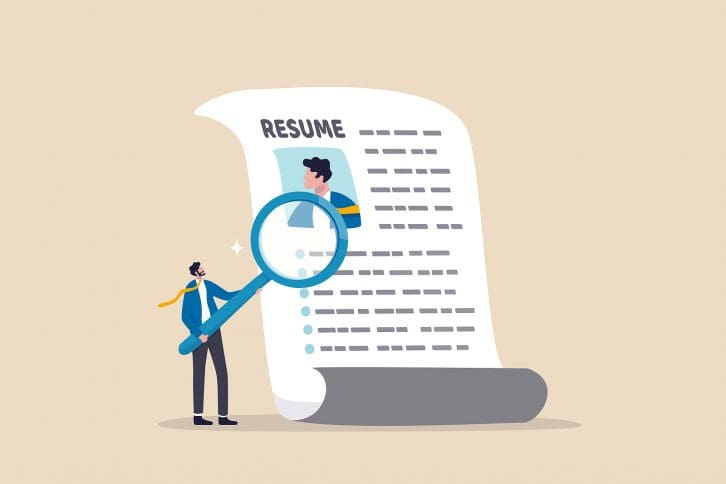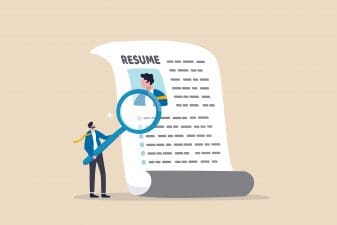
Now that every job posting is available to the masses and applications can be submitted with an easy upload, responses to any posting attract a glut of candidates. HR staff and hiring managers, swamped with resumes to cull through, now tend to rely on applicant tracking system (ATS) software to perform a first pass and filter out the most qualified. Automation of this initial task has become so popular that a reported 98 percent of Fortune 500 companies use it in their hiring practices.
For those applying for jobs, this means that alongside impressing the hiring manager, you must also strategize how to first get the bot to choose your resume. Expect competition to be fierce. On average, corporate job openings draw in an average of 250 applicants. From these, only up to six people usually are invited to interview.
It’s important to know that the recruiter or hiring manager will program the software to search for key words. You, as the savvy candidate, must determine what they might be and how to interweave them into both your resume and cover letter in a way that shows you possess the sought-after skills and have successfully applied them to solve problems for previous employers.
Here’s how to draft a resume that has a good chance the bot will choose:
1. Resist the temptation of taking a scatter-shot approach
Some applicants figure that online applications are a numbers game, so they simply use auto-load features, upload stock cover letters and standard resumes and push send. Posting out a blitz of resumes won’t get you noticed by a bot. Don’t waste your time applying for jobs for which you’re unqualified. Before uploading your online application, make sure that at least the majority of your skills align with the job requirements.
2. Target specific job sites
It’s better to narrow your search for online job listings to websites best suited for your particular industry or career level. This can save you time poring through generic job-search sites. Work to personalize your job hunt. You’ll have a better chance of matching skills in the job description if you’re in a target industry.
3. Research the company
Take the time to click beyond the job board and investigate the company that’s hiring. You’ll want to make sure it’s a good fit before you submit. Learn its mission and values. Delve into its projects and client profiles. Your research will help you make a personal connection when sharing your reasons for wanting to work for the company.
4. Tailor your applications
Most generic online applications read the same, but their minimal effort will be discernible even to a bot that will be looking for key words. Customize your resume and cover letter to the job for which you’re applying. Where possible, use words that match the employer’s descriptions of job requirements and skills — especially those listed near the top and that come up more than once. Also, research the most current terms describing the particular industry and the job position within it. Describe how skills were applied using numbers and metrics to indicate your ability to make a measurable difference.
5. Pay attention to word choice
Take in consideration that the bot can assess you as a candidate by your word choice. By recognizing that employers want problem-solvers and people with closure skills, as well as those with strong people skills, you can incorporate your strengths in these areas. But instead of just listing the preferred qualities, employ words and phrases that sell you as someone able to incorporate these strengths. For example, words such as “managed,” “directed,” and “led” connote leadership. Phrases such as “produced,” “saved,” and “delivered” indicate an ability to get results.
6. Include a cover letter
Even if it’s only optional, always include a carefully crafted cover letter targeted to the position and the company. The bot may also scan cover letters for the hard and soft skills listed in the job description, contact information, and even optimal length (make sure to keep it to one page). Since you are strategizing to get the bot to choose your application, draft the cover letter in such a way that it summarizes the topmost skills that you identified and incorporated into your resume. Again, include measurable results. Never use an automated cover letter (some sites generate them!). Instead, spend time writing a brilliant cover letter.
7. Review carefully before submitting
Make sure that your answers and uploads are letter perfect. All your work will be wasted if you mistakenly place the wrong information in the wrong field or misspell a key employable quality. Don’t use shorthand words you’re accustomed to using on social media. A bot may miss any informal use of words.
A bot may only speed read your meticulously drafted resume, but when you’ve painstakingly provided the essential skills, quantifiable achievements, and appropriate action words, you will have a fighting chance of advancing to the interview round.
Vicky Oliver is a leading career development expert and the multi-best-selling author of five books, including 301 Smart Answers to Tough Interview Questions (Sourcebooks 2005), named in the top 10 list of “Best Books for HR Interview Prep,” 301 Smart Answers to Tough Business Etiquette Questions (Skyhorse, 2010), and Bad Bosses, Crazy Coworkers & Other Office Idiots (Sourcebooks, 2008). She is a sought-after speaker and seminar presenter and a popular media source, having made over 901 appearances in broadcast, print and online outlets. For more information, visit vickyoliver.com.









